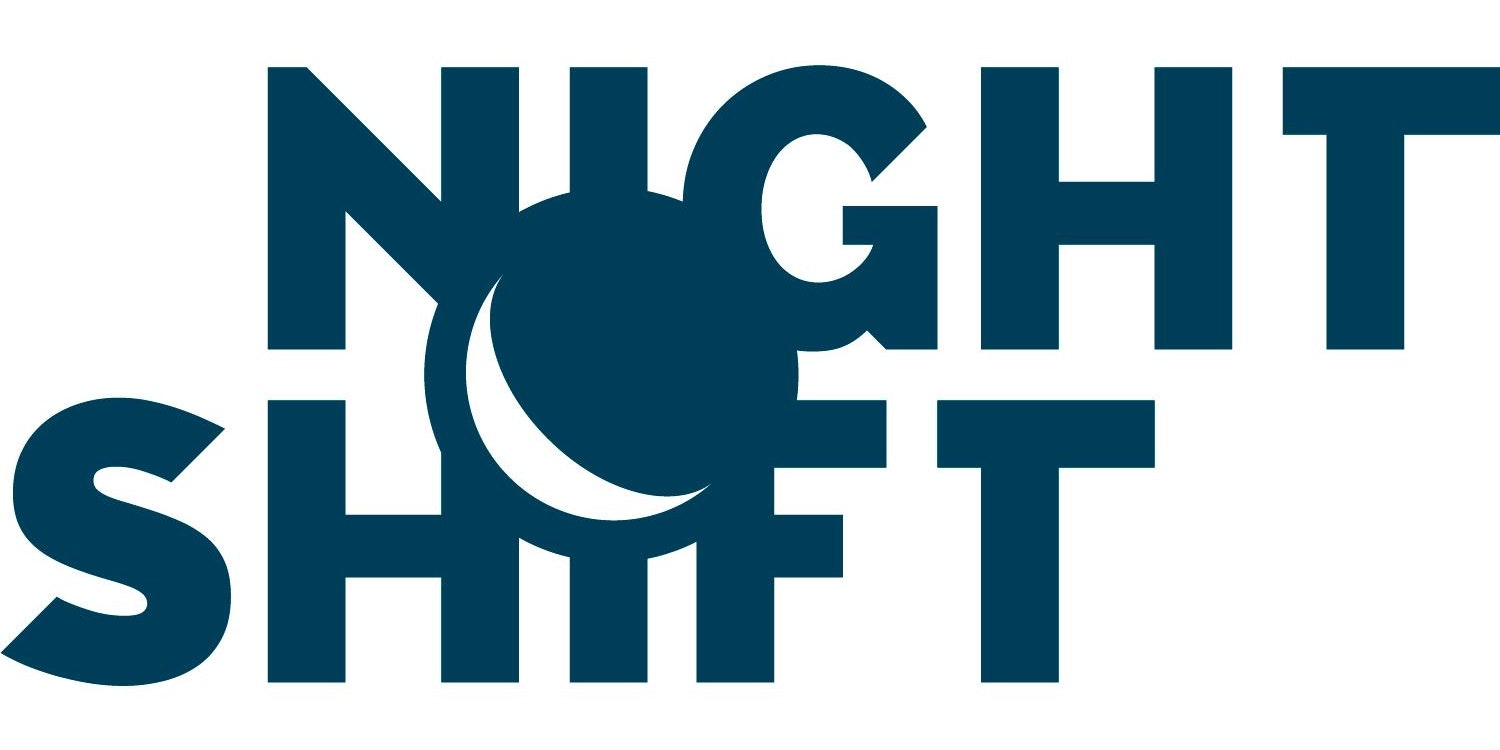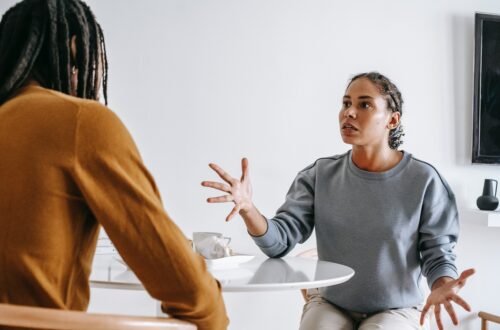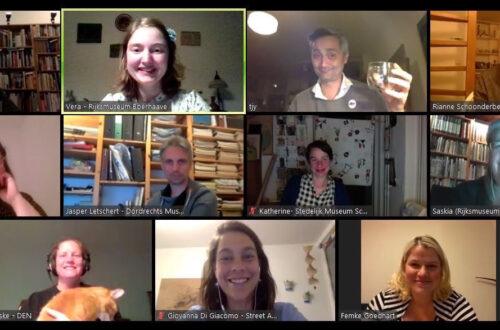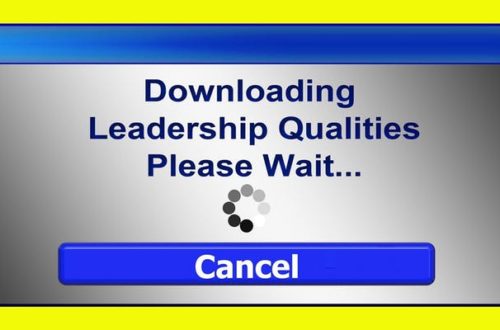
The Social Role of Museums – by Graham Black
On Thursday the 25th of October, Night Shift was dedicated to the question: What is the social role of museums? Prof. Graham Black shared his thoughts on this via a Skype connection and kindly gave permission for his talk to be shared here.
A description of the entire night (in Dutch), including a reflection on the talks of Jesse van Oosten (independent curator), Kiran Sukul (Haags Historisch Museum) and Yuri Matteman (Naturalis), as well as the conversation that ensued can be found the website of Hereditas Nexus
The Social Role of Museums
ROTTERDAM Night Shift 25 October 2018
Professor Graham Black
I am approaching the end of my career. This does things to anyone. Like most museum professionals, my head has largely been buried in the sands of today’s challenges and I have left the future to look after itself. Now, in contrast, I find myself staring towards the horizon in search of a credible narrative for the future of museums. What will museums be for in, say, 2050? And, to extend Stephen Weil’s (1999) famous question – what difference will it make that our museums are still here then?
In trying to answer these questions, there are only two certainties:
- No matter how much we wish it was, the future will not be like the present.
- You cannot rely on the concepts of the present to solve the challenges of the future.
As an offspring of the Enlightenment, I used to know what museums were for:
- The collections jointly held by museums together represent the physical and cultural memory of humankind and of the world we live in – inadequate and deeply flawed, but the only one we have. Museums celebrate these collections and care for them on behalf of the whole of humanity.
- It has always been the task of public museums to research those collections and then communicate to wider audiences the knowledge and understanding they have uncovered. In the process, we all gain a greater understanding of the world we live in, and our place in it.
- These functions sit alongside expectations specific to individual institutions – and it is the marrying of the general to the specific that gives each museum its uniqueness, and its ability to develop a singular vision, whilst bringing remarkable vibrancy to the field as a whole.
But where should the priorities lie between these. Until the 1960s there was certainty. The object was king. Since then, things have been much more confused. We have seen a revolution in the attitudes and behaviour of many museum professionals, supporting an audience-centred approach that placed a new focus on engaging the users, and one that envisaged broadening the audience base beyond elites. But, as I will attempt to explain later, the battle is still under way.
There have been two great waves of change. The first – and the one in which I learnt my trade – was the rise of the ‘New Social History’ in the 1960s and 1970s. The past was no longer just about the actions of elites. It was now recognised that the life experiences of everybody contributed to the state of contemporary society. What this meant in practice was the beginning of the democratisation of history. New museums of social and industrial history sprang up, most with little or no public funding. New collections were developed, and these included oral histories as well as objects. Disciplinary silos continued however – Decorative Arts for the elites, Social History for the rabble. Nevertheless, the New Social History – and the new generation of curators that followed – had and continues to have a major impact on the sector as a whole, even though the concept of Social History has stalled somewhat.
The second great wave came with the rise and rise of museum learning in the 1980s and 1990s, and an associated growth in the numbers and influence of museum education officers. This continues to have – a huge influence on the public face of museums worldwide. Exhibitions are now team products. Programming has become an integral part of the museum offer. School groups come to museums in their thousands. Audience advocates have begun to influence every aspect of the museum visitor experience – my own work, for example, is absolutely focused on the holistic nature of the museum visit, and the need to transform visitors into users.
Now, since the noughties, we are at the beginning of what might be a third wave of major change – the battle to prioritise the Social Role of museums. Is this what museums will be for in the future? Believe me, if you want it to be as influential as the previous museum revolutions, it will be a battle. Let me explain.
If you look at the literature emerging from both practitioners and academics today, you will see this Social responsibility being actively promoted. The impact museums can have through their support for marginalised communities – not least working towards the integration of those communities into wider society – has been given a central role in the narrative. More recently this has been extended to include health and wellbeing. Published texts include:
- Mastering Civic Engagement: a challenge to museums (2002) USA: American Alliance of Museums
- More than Worth It: the social significance of museums (2011) Netherlands Museums Association
- Sustainability Report and Recommendations (2012), Canada: Alberta Museums Association
- History to Health (2012) Alison Bodley for Arts Council England
- UK Happy Museum Project (2013)
- Museums Change Lives (2013) UK Museums Association
- The Social Value of Museums, AAM Conference 2015
- Organisations like NEMO have made blunt statements like ‘We believe that museums can change lives’
- Writings of luminaries such as Dodd (2002) Richard Sandell (e.g. 2012), Lois Silverman (e.g. 2010) and – not least – Robert R. Janes (e.g. 2009).
As someone whose own life was changed through engagement with a museum, I am a strong supporter of this work – and I am sure that in the discussion after my talk you will hear of some inspiring examples. Yet I have severe doubts about WHAT museums are doing, WHY they are doing it; WHO they are doing it for; and WHETHER THEY ARE UP TO THE CHALLENGE. I welcome tonight’s opportunity to question museum actions in this field.
Track record
We have a difficult record to overcome in terms of social impact. 19th century museums had a specific remit to promote a stable social order, supporting the values of the middle and upper classes and a social hierarchy, and hence a stable society.
Do museums not still project middle class values and attitudes? Is this not why well over 70% of audiences are from the middle/professional classes? In seeking to engage with marginalised communities, are middle class values not still an unspoken but core part of the museum agenda? And is this such a bad thing, given that September/October 2018 has been defined as a key tipping point when more than half the world’s population could be defined as middle class (Kharas & Hamel, 2118).
The first part of the battle is to convince communities that it is not all a middle-class conspiracy.
Who has benefitted from the modern commitment?
Alongside the ‘New Social History, and part of the same social movement, the 1960s saw the emergence of the concept of ‘participation’, seen as a founding principle of modern democracy – concerned with empowering people through their inclusion in the political decision-making process, and thus a major challenge to the political status quo.
The concept got hijacked by developers. However, the original radical political meaning never fully disappeared and gained added relevance in the UK in the 1990s as an essential element in the then New Labour government’s social inclusion agenda and, through this, had substantial impact on UK museums – which were given a role in supporting marginalised communities to develop the confidence and skills to take more control over their own lives and play a more active role in society (Black 2005; Sandell 2003) – AND – KEY TO THIS – MUSEUMS WERE GIVEN CENTRAL GOVERNMENT MONEY THROUGH PROJECT-BASED FUNDING TO FULFIL THIS ROLE.
So, it took from the 1960s to the late 1990s for publicly-funded UK museums to commit to a social role on any real scale – and only then because of new money AND a direct instruction from their public-sector moneymen to stop being so elitist. It is the museums – not the communities – who have benefitted most because they got the grants. And the commitment was very much money-driven – projects stopped, and communities were abandoned, when this new money ran out. It was NOT on the whole embedded in the core revenue budget, with even the staff involved largely freelance – so they moved away and took their experience with them when funding dried up.
The second part of the battle is to ensure that the social role is funded from core museum revenue budgets, and therefore is a part of the museum’s planned future.
Power Not to the people
What makes the situation so frustrating is that it is mostly about POWER – on two levels – within the museum organisation itself and between museums and their users. Museums are all about control. In deciding what or what not to collect and display, they decide what is or is not, for example, history or great art. They then act as gatekeepers to control access to their collections and the stories these tell.
But, to go down the social impact route means truly SHARING power and decision-making between museum personnel and with museum users. It is therefore TRANSFORMATIVE! It affects every aspect of museum mindset, management and operation.
Let me start in-house, and contrast ‘Old Power’ which is leader-driven, jealously guarded, closed and inaccessible, with ‘New Power’, which is open, participatory and peer-driven (Heimans and Timms (2018). This is of profound relevance to a still highly hierarchical and operationally rigid museum sector where many junior staff work across disciplines and engage actively with both audiences and new media while, in their offices, too many older men in ties still make and impose the big decisions.
If museums are to achieve the root and branch transformation needed to meet the expectations of twenty-first-century audiences – all aspects, not just social impact – there must be sustained institutional commitment, a managerial receptiveness to experimentation, and a capacity to drive change for the long term. These attributes are rare in the museum field. A report on innovation in Australian museums sums up the problem:
While the study identified many examples of innovative practice…initiatives tend to be isolated, episodic and difficult to sustain in the long term…Only a few…organisations have made fundamental changes to their planning, structures and operations to place innovation …at the core rather than as add-on activities. (Mansfield et al. 2014, xi)
Now, let me turn to community engagement and a forlorn search for co-creative projects that truly share power. Here, I offer up Bernadette Lynch’s wonderful report, Whose Cake Is It Anyway (2011) as my primary exhibit. My second exhibit is a void – what examples can you give me of community groups transferring in substantial and sustainable numbers from project work to become regular museum users?
The third part of the battle is to ensure all levels of museum personnel share commitment to the Social Role, and the museum’s operational structure is transformed to drive the Social Role forwards.
Are museums up to the task?
We are in an era of overwhelming social challenges to Western society.
In the UK, NESTA, the National Endowment for Science, Technology & the Arts, has defined six major areas of social challenge and instigated a ‘Digital Social Innovation’ project as one way of responding to them. Briefly, these are defined as:
- Health and Care; Ageing society & social care, support for people with disabilities, wellbeing, etc.
- Skills and Learning; Reduce inequality of access/outcomes, support development digital skills, etc. I would add the democratisation of creativity.
- Food, Environment and Climate Change; Transition to more sustainable societies and economies, localised energy production, affordable solutions, raising public awareness and engagement, etc.
- Migration and Integration; Longer-term integration challenges, including education & training, community integration and participation, language learning, labour-market integration, etc.
- Digital Democracy; Growing mistrust in democratic institutions, rise of the politics of populism and fear, shrinking of civil society spaces, emergence of misinformation, etc.
- Cities and Urban Development; Social and demographic changes, social cohesion, loneliness, air & noise pollution, housing quality & affordability, low democratic engagement, etc.
These are HUGE issues and NESTA is supporting pilot projects across the country, and encouraging partnerships. Can museums really take on issues like these?
I am not saying museums should match this scale of action, but we could really do with vision of museum action across social challenges, on at least a national scale, if we really want to claim that museums can change lives. I am also not saying it all has to be immediate – the Social History and Learning revolutions each took 20+ years. But I am saying that if the social role of museums is to have the same impact as past revolutions in museum practice it must involve every element of the museum service, not just some ghettoised community engagement officer.
WHERE can we make the most and sustained impact?
WHO can we partner?
HOW does this relate to collections?
The final battle is, therefore, to define the vision – and then see it through. Like the New Social History and the Learning initiative, the Social Role must engage with every aspect of the museum, and museum sector, if it is to have permanent impact on museums as well as on the communities we serve.
And we do have good examples to call on, including:
- Nina Simon’s new OF/BY/FOR ALL initiative, with twenty institutions involved and its challenge of influencing the lives of 1 million people, shows that some people are thinking big (Simon, 2018).
- ICOM’s Migration Cities project is showing how international collaboration, and learning from each other, can make a real difference (ICOM u/d).
- Alberta Museums Association’s new video series, Taking Action on Climate Change, created by the Alberta Museums Association and the Coalition of Museums for Climate Justice, is intended to mobilize the museum sector to think differently about their role in climate change awareness and community resiliency, and to take action (Alberta Museums Association, 2018).
My personal interest, however, is in the transformation of museum management that is essential if a sustained role in social engagement is to be achieved. Not surprisingly, therefore, my favourite project at present is the Our Museum initiative of the Paul Hamlyn Foundation, an on-going project that began in 2008 (and includes Whose Cake is it Anyway). It is specifically intended to facilitate a process of organisational change within UK museums and galleries that are committed to active partnership with their communities. The project has involved nine institutions, large and small – ranging from National Museum Wales to the Ryedale Folk Museum – and their associated communities in a reflective, collaborative experience where they have shared experiences and learned from each other, based around the concept of museums and communities as active partners. Crucially, the initiative has shown how organisational change processes play a significant role in placing community needs, values and collaboration at the heart of museum practice (Moriarty & Medlyn, 2016).
Thank you.
Night Shift is a monthly debate night by and for museum professionals from Rotterdam and beyond. If you like what we do, you can support our work by attending our next event on November 15th or making a donation.
References
Alberta Museums Association & Coalition of Museums for Climate Justice (2018) Press Release: New Video Series: Taking Action Against Climate Change, Edmonton, Alberta: Alberta Museums Association, accessed on 25/10/2018 at: https://www.museums.ab.ca/media/96586/media_release_-_ama-cmcj_new_video_release_september_2018_final.pdf
Black, G. (2005) The Engaging Museum, London: Routledge
Dodd, J (2002) Museums and the health of the community, in Sandell, R. (ed.), Museums, Society, Inequality, London: Routledge, pp182-189
Janes, R.R. (2009) Museums in a Troubled World, London: Routledge
Heimans, J. & Timms, H. (2018) New Power: How it’s changing the 21st century- and why you need to know, London: MacMillan





